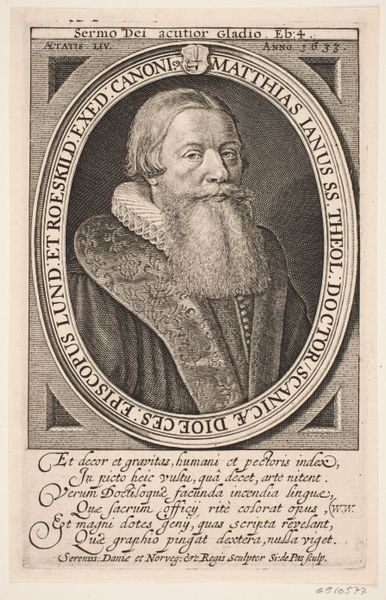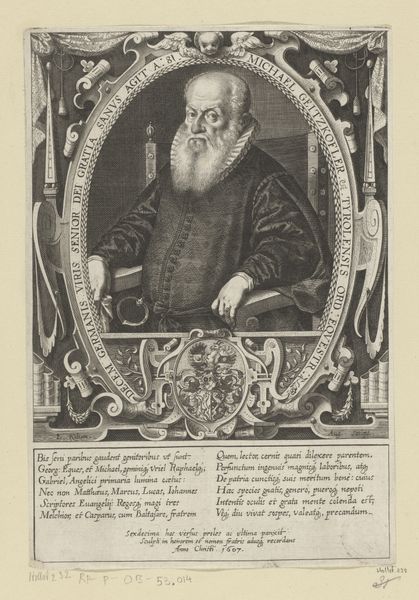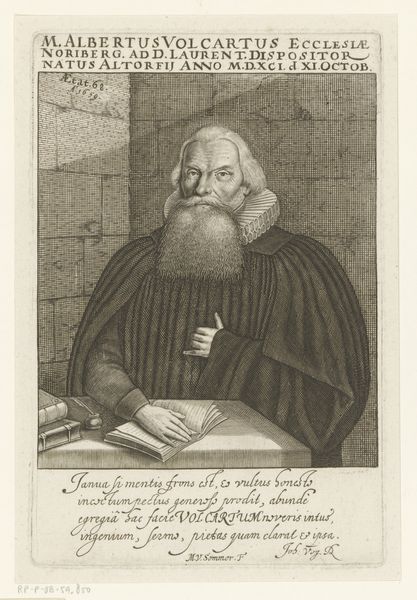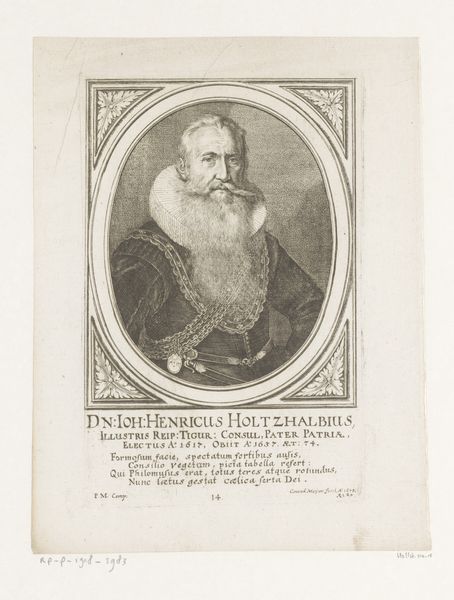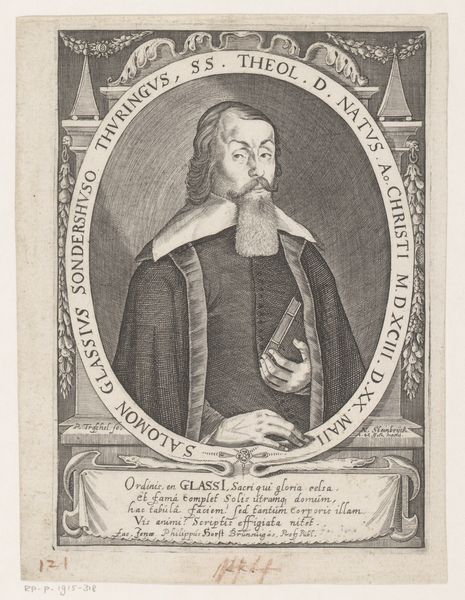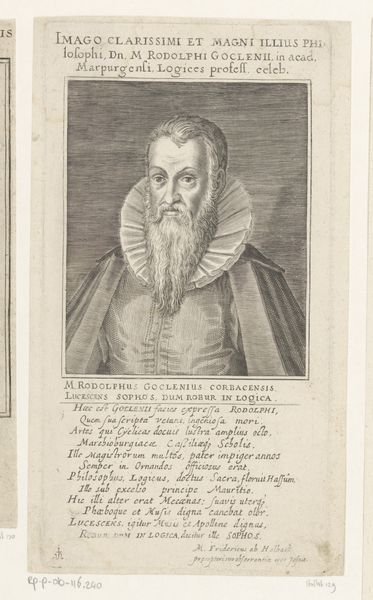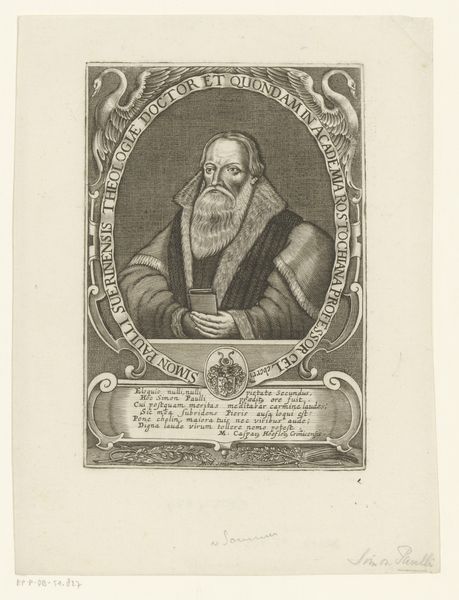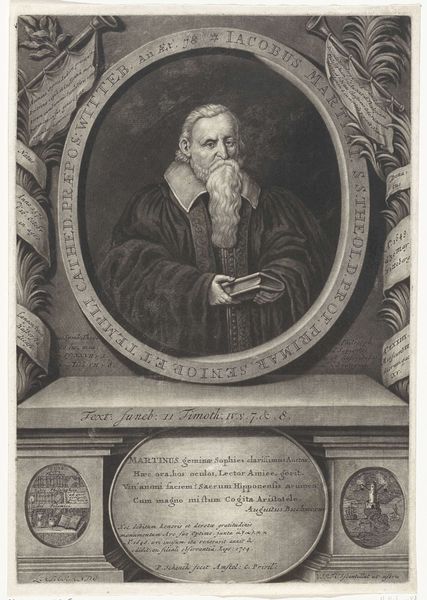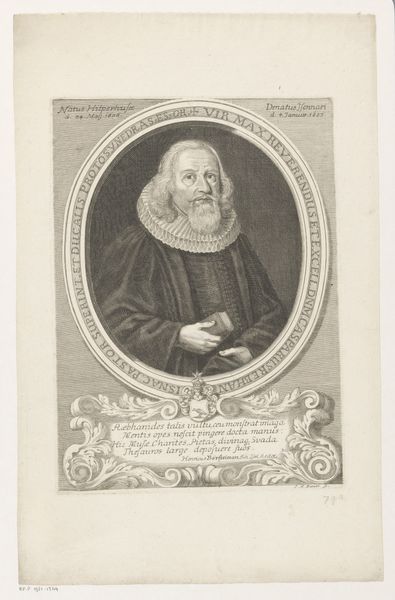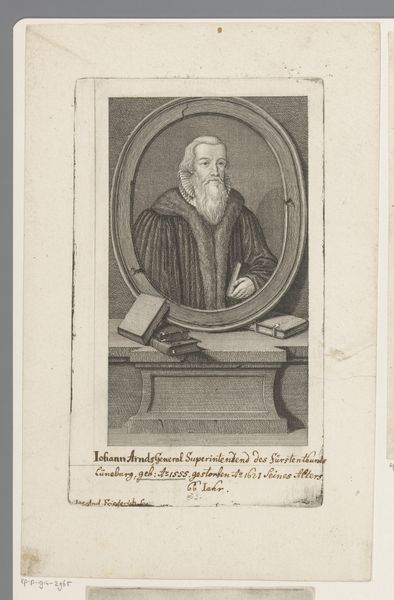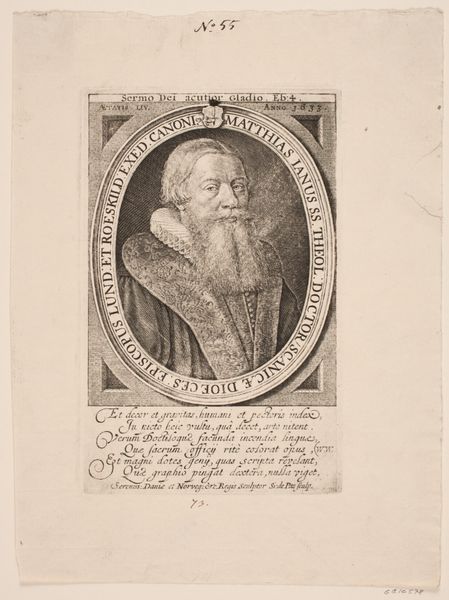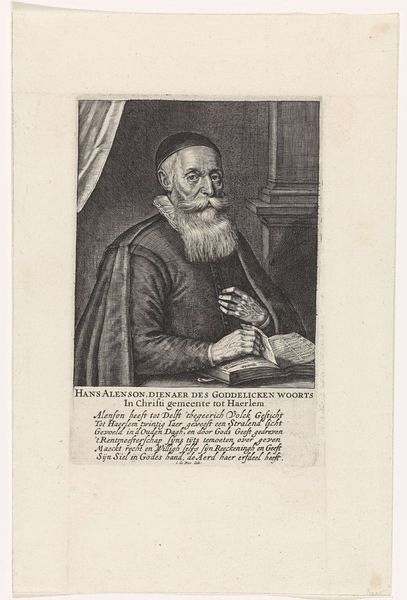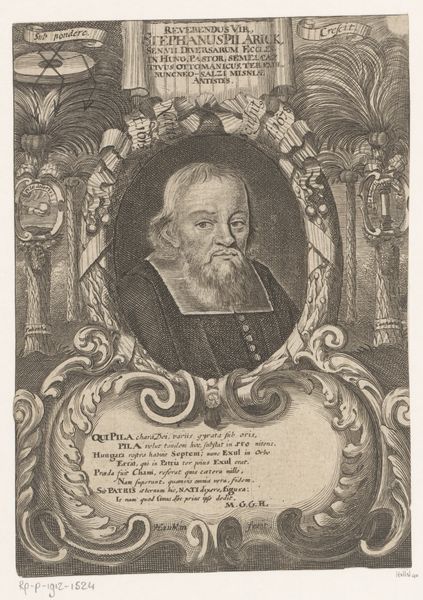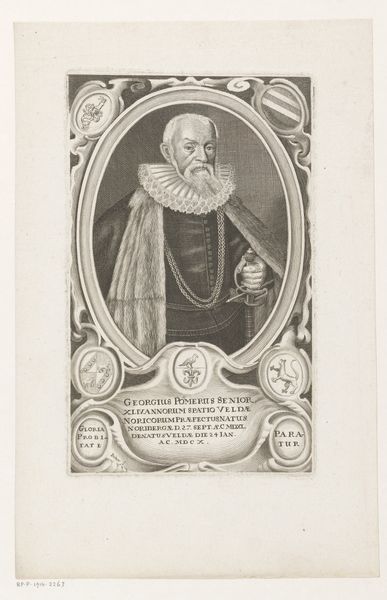
print, paper, engraving
#
portrait
#
baroque
# print
#
paper
#
line
#
engraving
Dimensions: height 221 mm, width 137 mm
Copyright: Rijks Museum: Open Domain
Curator: So, here we have a work from 1666, housed here at the Rijksmuseum: a portrait of Johann Joachim I Gwandschneider, rendered in print, using an engraving technique. What's your initial reaction? Editor: He looks... formidable. It's the beard, I think, and the direct gaze. And is that a fur-lined cloak? It whispers of status, authority... almost intimidating! Curator: Absolutely. The fur cloak is one detail, but consider the paper it's printed on. The type of paper available, the inks, the very act of reproducing his image for circulation – it all points to the commodification of status in the Baroque era. Who could afford it and who was the targeted audience? Editor: You're pulling me down the materialist rabbit hole, but alright! The crispness of the lines for example...that speaks of meticulous labor. Someone invested a great deal in immortalizing this Gwandschneider chap. Why print though and not, for instance, paint him on canvas? Curator: A painted portrait, of course, was typically more expensive, more exclusive. Print allowed for a wider distribution. It brought the image, and by extension the status, to a slightly broader, but still affluent, segment of society. Think of the implications of readily available iconography in disseminating power during that era. Editor: A portrait repeated, amplified... propaganda almost? I am also interested in the verse right below him: the language speaks volumes about that society’s view on the powerful and fate itself. Curator: It reinforces that perception of inescapable destiny. Let’s consider the act of creation, that precise line work carved laboriously onto a metal plate, each line a conscious decision to represent power and piety...it is telling. Editor: You know, looking at it now, the expression seems less stern and more… world-weary. Like he’s carrying the weight of all that numinous authority on his shoulders. He probably lived in troubled times with much less individual freedom. I can somehow sympathize with this immortalized, formidable man. Curator: Exactly. Understanding the processes, materials, and the societal backdrop opens new doors to interpretation, personal connections, and reevaluation of artistic value that bypass traditional art-historical narratives. Editor: Indeed. It's more than just a picture; it's a fragment of a past existence, meticulously replicated, awaiting for us to connect to its subject.
Comments
No comments
Be the first to comment and join the conversation on the ultimate creative platform.
